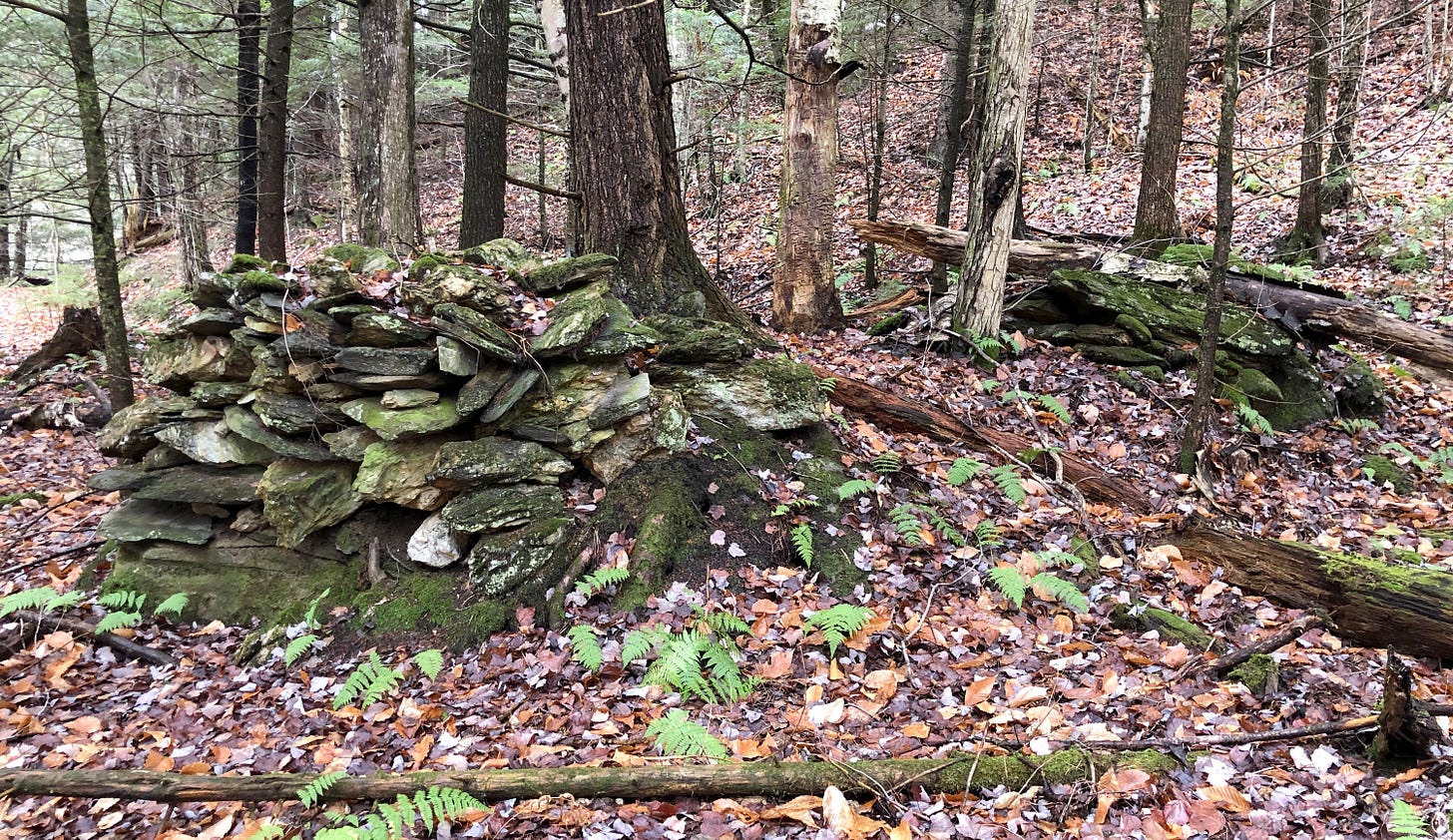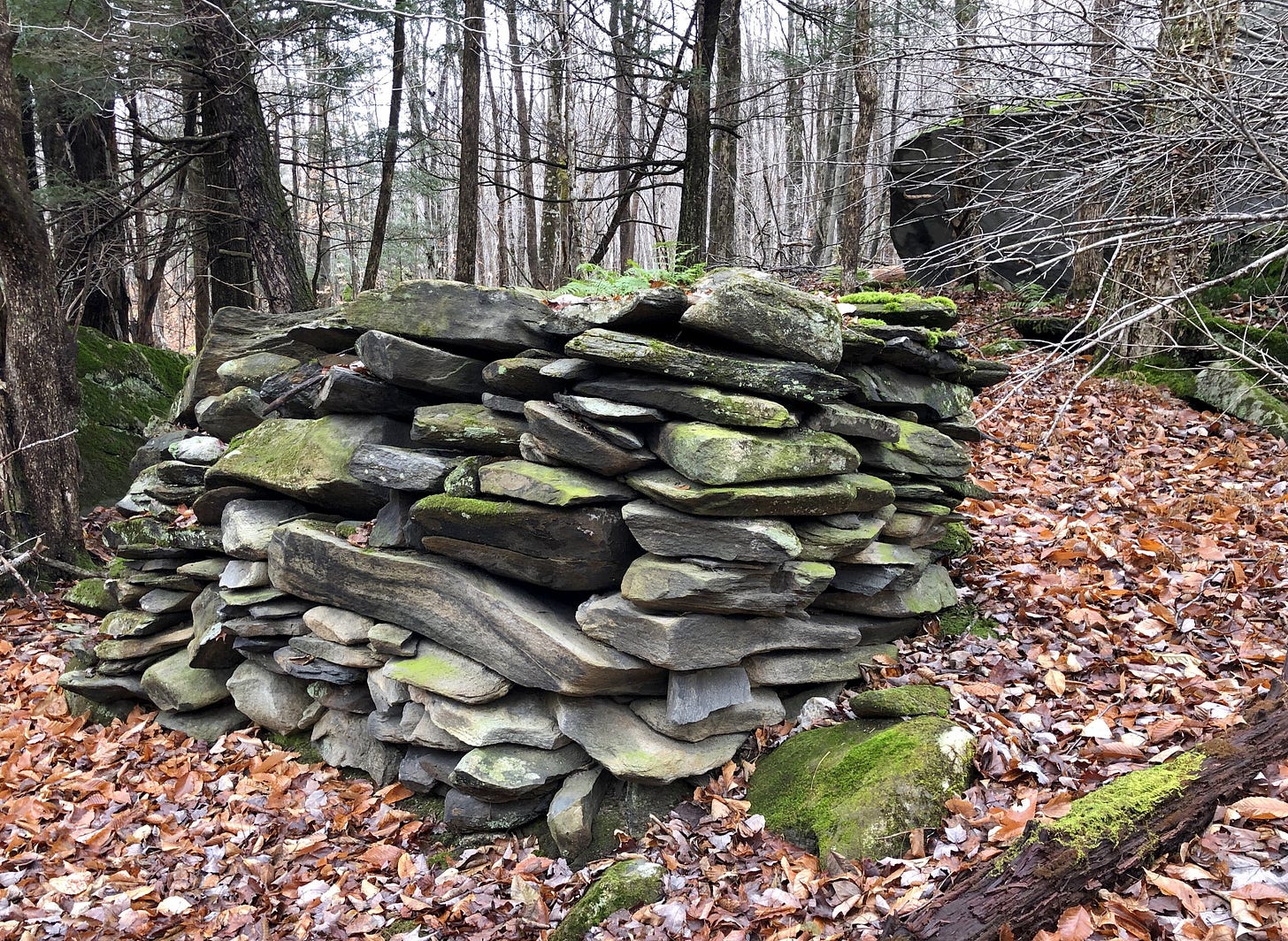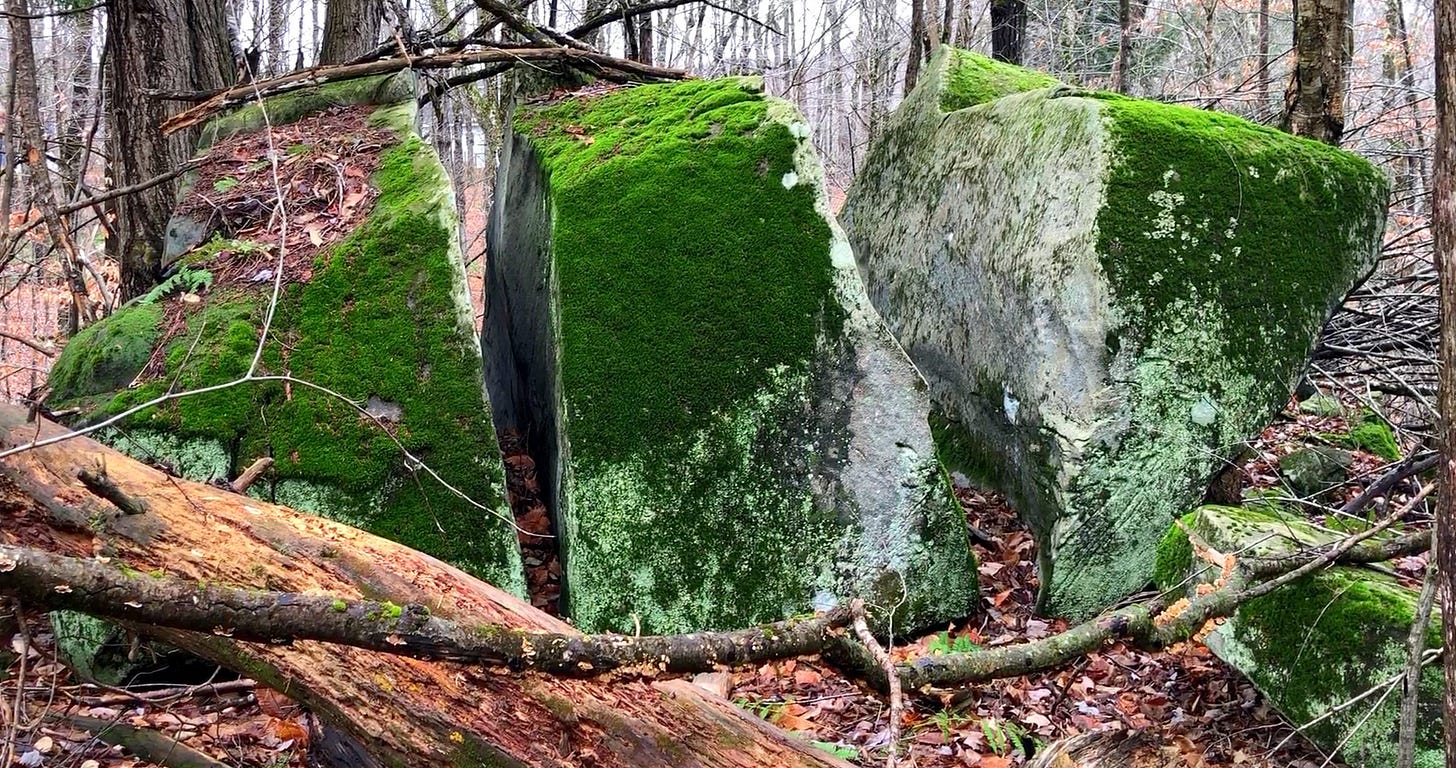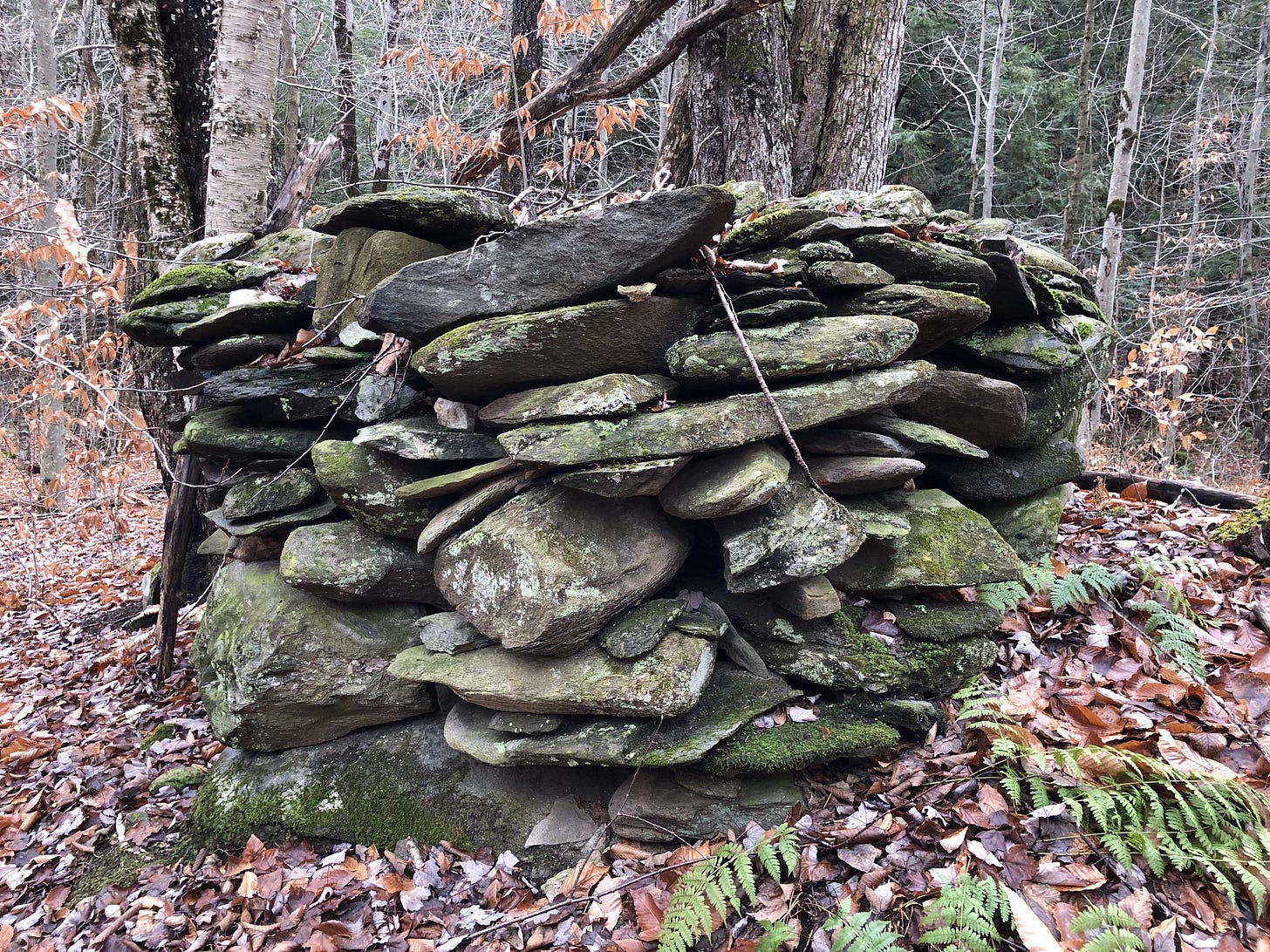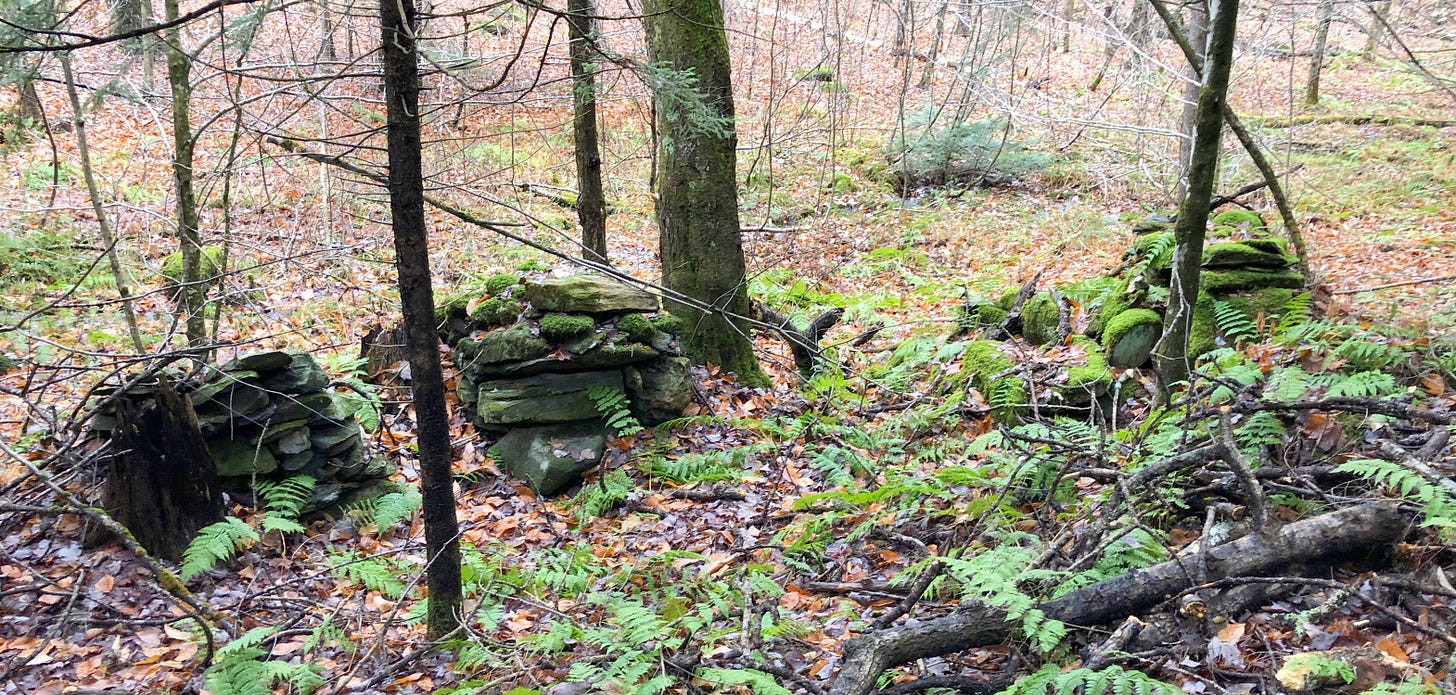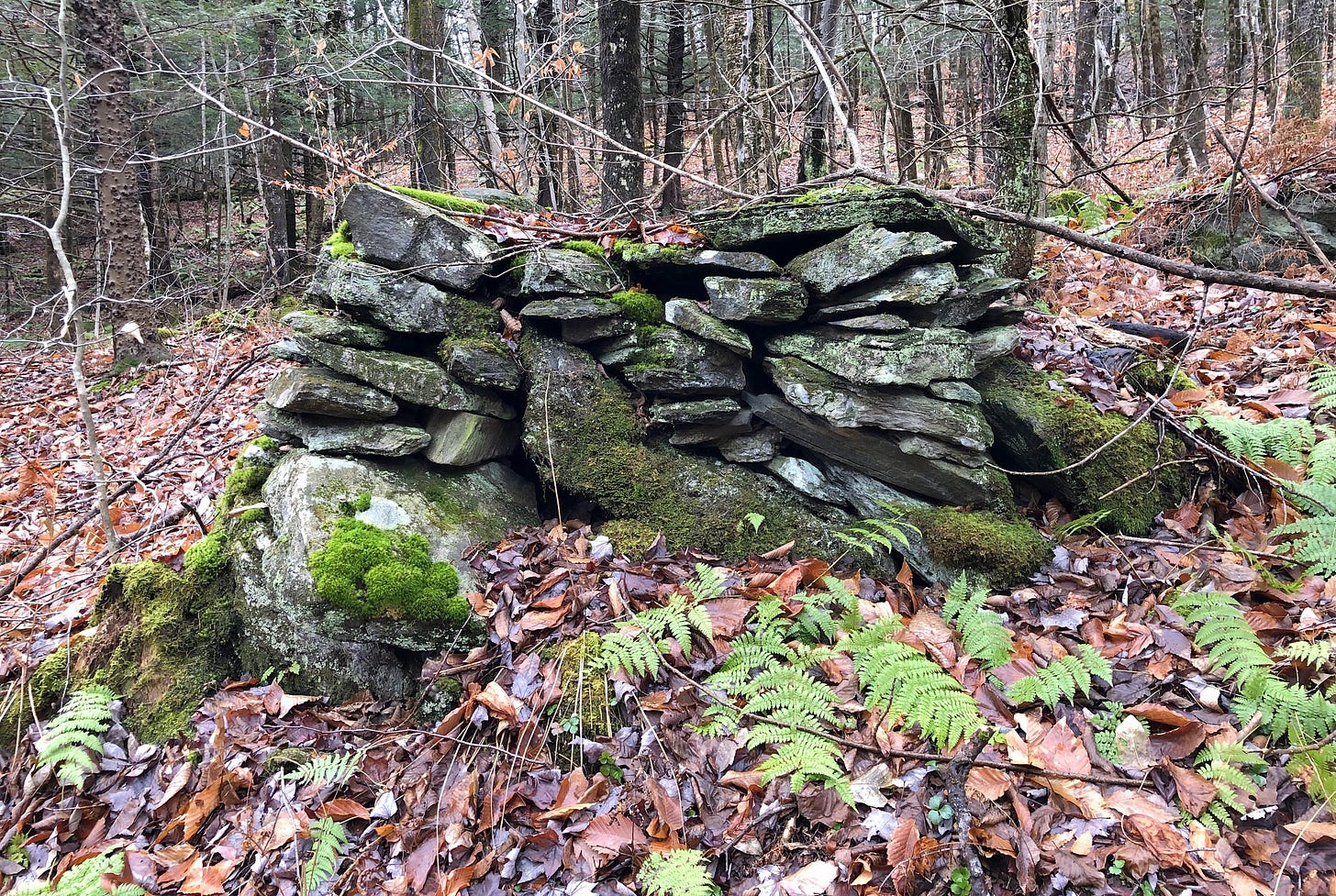This article can also be found in the new NEARA Transit Newsletter (Autumn 2023 / Volume 35, No. 2 / Issue #66)
We haven’t heard a lot about ancient, possibly Indigenous stonework in Northwestern Vermont, through the years. Does that mean there’s little to be found? Not necessarily. There may be more than we know, unreported. Or not yet even found. A few factors seem to have combined to keep reported sites in the region to a minimum.
Given early amateur researchers’ focus on stone chambers – and an apparent lack of them in northwestern Vermont – the Stone Chambers in Southern Vermont attracted most of the attention given to ancient stonework in the state in the past. The incredible, yet once commonly held belief that “No Indians ever lived in Vermont” also likely dampened interest in Indigenous stonework. And still-held mistaken beliefs, such as “there are no stone walls in the Champlain Valley” may also quell enthusiasm for searching them out.
Yet, there is ancient, potentially Indigenous Stonework in the Champlain Valley, including stone “walls.” This summer, I looked into several stunning, cairn-like stone assemblages at a site near the borders of Bolton, Jericho and Richmond. And found I wasn’t the first. While nothing official was on file, email queries to some long-standing NEARA members led to Norman Muller sending me notes from a visit he made back in 2010. A former member, no longer with NEARA, led a few trips to the site.
Norman wrote, in part:
Several cairns were passed until we reached a massive triple split boulder, in front of which was a carefully piled stone mound... From here we followed the stream and slope downhill, passing by several or more fairly large and interesting cairns to a beautiful stream and cascades…
The Triple-Split Erratic at this site is quite striking. It’s one of two large Glacial Erratics which attract notice from the trail. The other one appears first, looking somewhat conical or pyramid shaped. A second stone alongside it helps suggest a Turtle form. They’re surrounded by a vernal pool.
The other, whitish boulder is indeed split into three large, upright “slices”. Another slice lies horizontal on each side, and there is curving, cairn-like stonework atop the horizontal slice of boulder on the eastern side, which may represent a Serpent form.
A roughly circular cairn-like stone assemblage is visible from the “front” or South side of the Tri-Spilt Erratic, its form evoking thoughts of a turtle or coiled Serpent. South of this stone assemblage, near where the brook empties into a larger stream, is a third cairn-like stone assemblage, which possesses vaguely aquatic forms.
Continuing past the third large assemblage along the shore of the stream leads to a group of three smaller cairn-like stone assemblages. These are soon followed by a pair of two slightly larger cairn-like stone assemblages just before the stream reaches the waterfall, which is indeed beautiful.
More long and low cairn-like stone assemblages and less complex possible stone prayers are found to the north, slightly apart from this group.
Only the first three large constructs were visible during the summer visit. I’ve filed an initial site report with NEARA. A follow-up fall visit revealed the stream-side stone assemblages and more. Is there additional stonework at this site? I look forward to continuing to find out.





